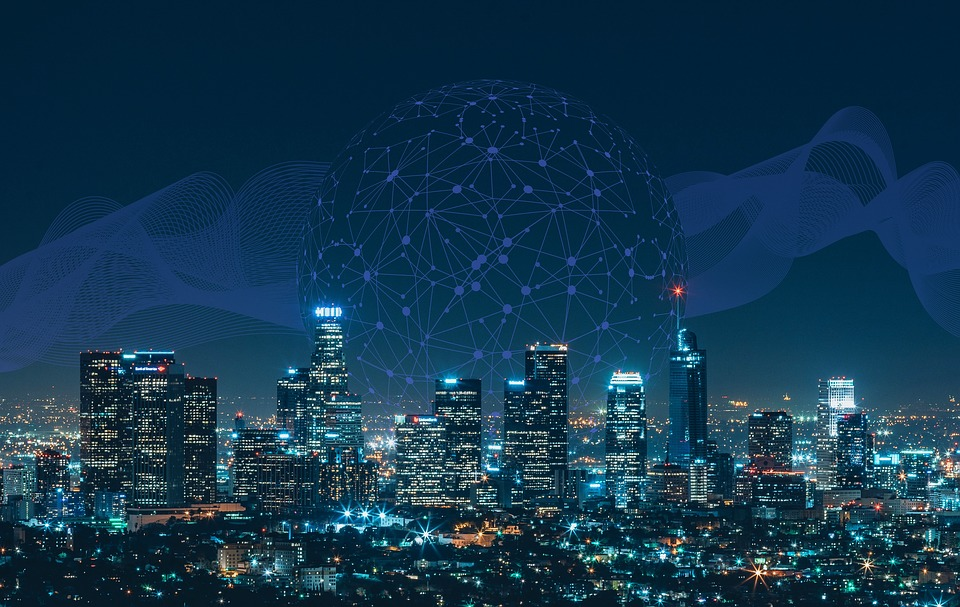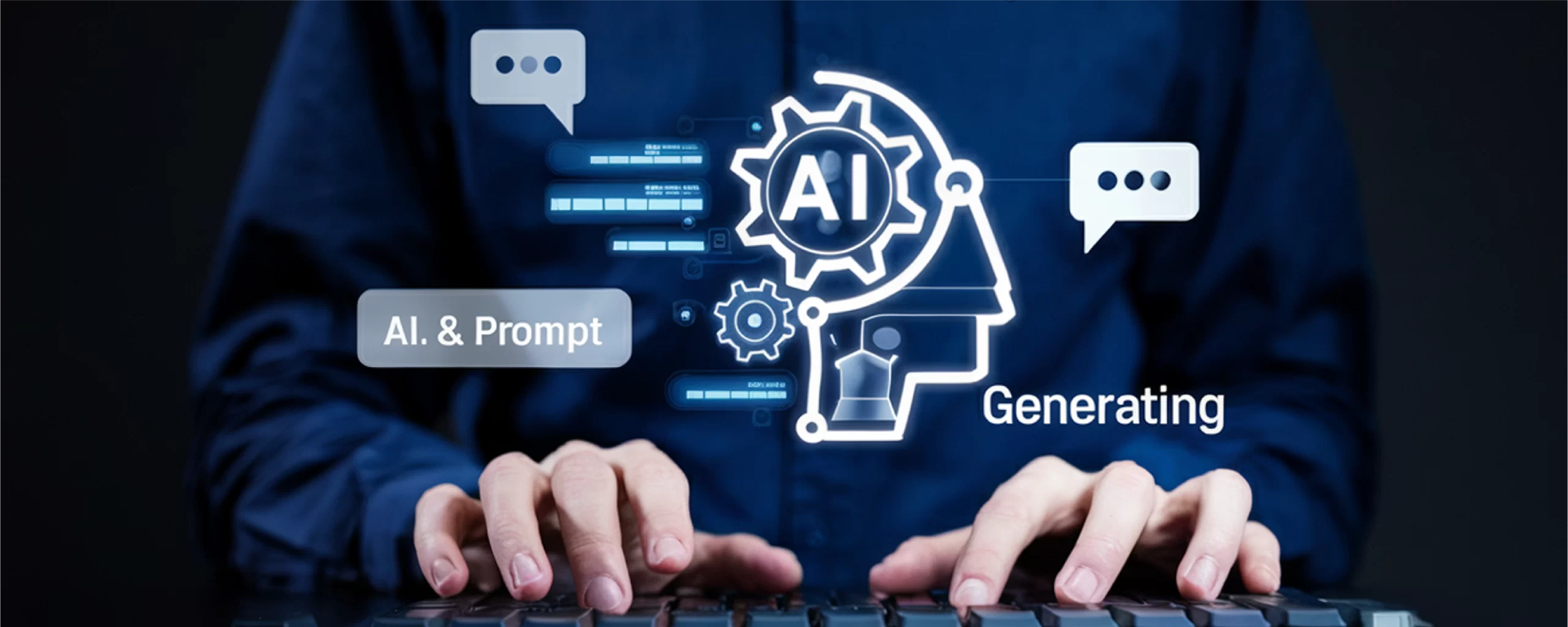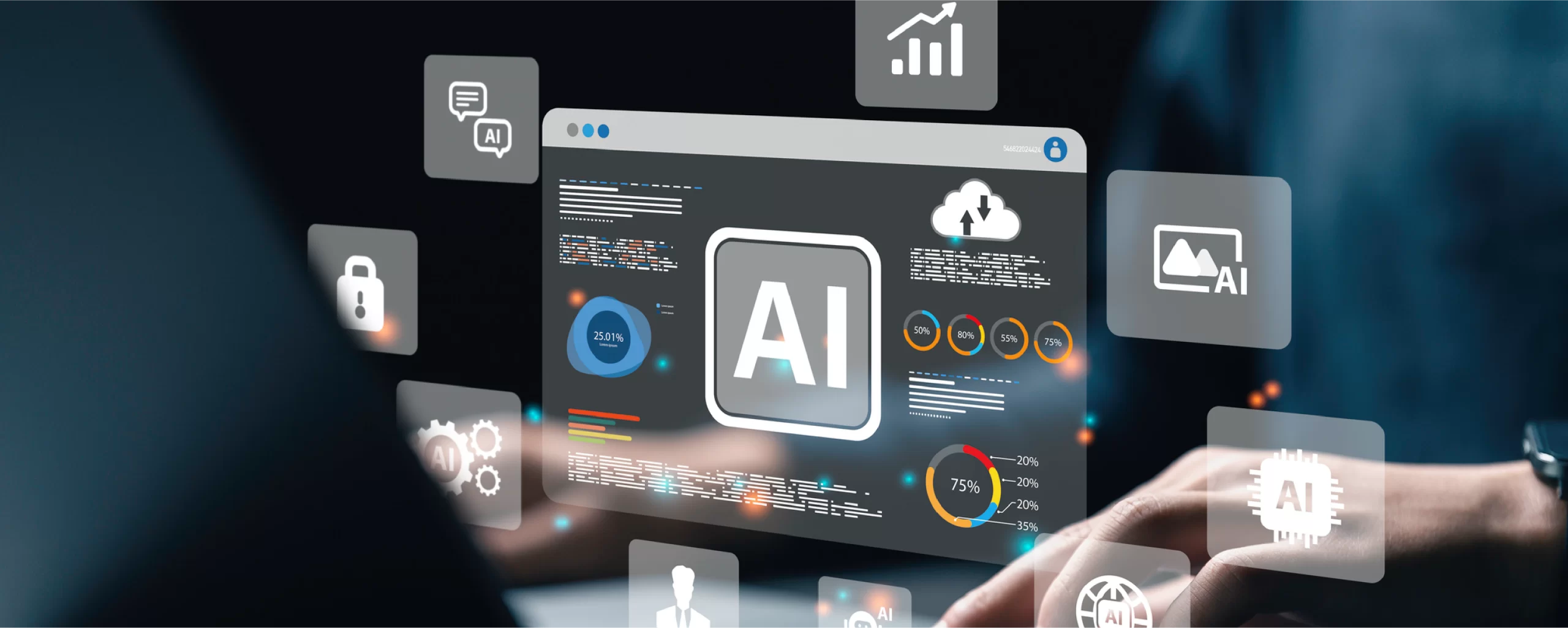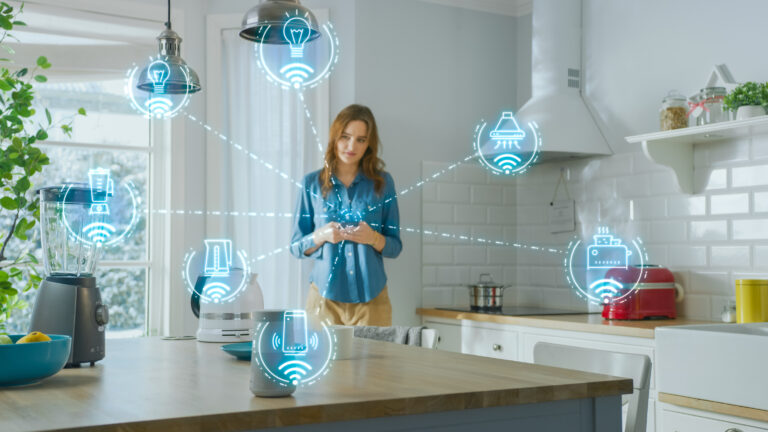How Can Future Smart Cities Power Themselves?
Smart-city journeys progress beyond technology deployment to a people-centered focus. It involves integrating Internet of Things (IoT) technologies such as sensors, AI, or 5G technology with existing infrastructure to power various hardware such as urban photovoltaic window coatings and glass, self-powered multifunctional windows, or electricity-generating roads, solar paths, bus and vehicle charging shelters, and so on. Smart cities offer a significant chance to cut energy usage while satisfying service demand, enhancing grid stability, and raising the overall quality of life. These breakthroughs are altering the energy landscape by creating new synergies that reduce emissions, increase energy efficiency, and increase resilience.
Urbanization is never-ending, with cities accommodating 54% of the world’s population, which will rise to 66% by 2050. Therefore, to solve this issue, citizens and local governments are launching quick initiatives, and smart cities are a viable option to meet this objective. Smart cities go beyond energy efficiency by generating more energy than they consume. Smart communities cultivate their food and use recyclable materials to create things. They count every drop of water used and every tonne of natural resources saved. They are frugal but positively: nothing goes to waste in a smart city. Below are the few objectives of self-powered smart cities:
- Improve the region’s energy independence
- Empower consumers to use electric vehicles
- Reduce greenhouse gas emissions
- Encourage economic growth
- Provide constant broadband and Wi-Fi connectivity
- No dead zones or dropped calls in the smart city
- Dodge traffic congestion and lowering harmful emissions from automobiles
- Zero-carbon emissions, resulting in synergies with intelligent demand-side systems, distributed generation, and renewable energy sources, allowing for more effective use of grid energy assets
Smart cities include a variety of industries, as shown in Figure 1, including smart buildings, mobility, energy systems, smart security, smart transportation, smart utilities, smart education, smart healthcare, smart governance, smart lighting solutions, etc. Smart water and power monitoring helps consumers save money by providing more control over their household utilities. Integrating smart mobility, such as electric vehicles, self-powering smart grids, or smart sensors, with smart cities provides benefits such as energy storage and new revenue streams. As a result, energy production and consumption are changing, where electrical energy systems constitute the critical infrastructure of smart cities.
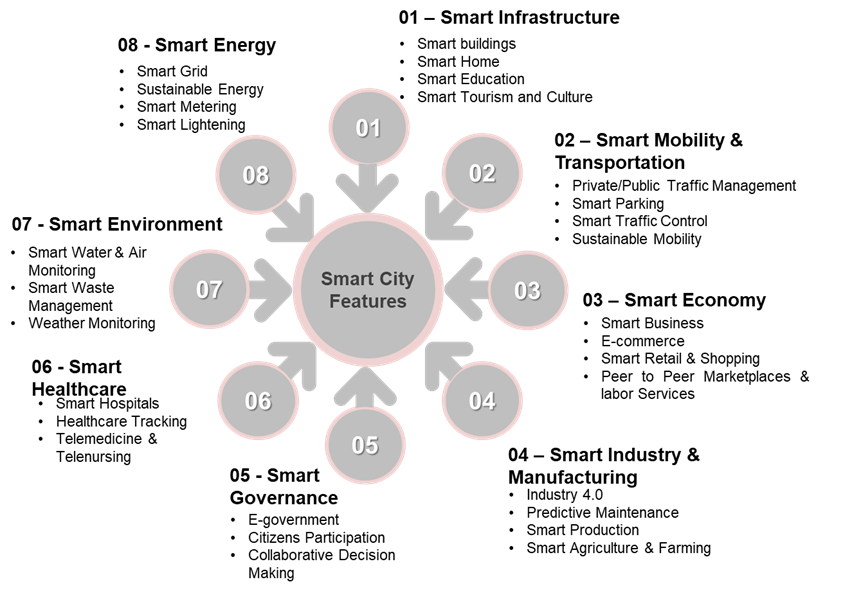
Sources of Renewable Energy for Smart Cities
Smart appliances, energy sensors, smart meters, and smart grids are among the energy systems used in smart cities. Smart sensors and meters can automatically track energy consumption, allowing for a more sustainable energy transition. In Smart Cities, IoT devices convert and consume energy from distributed energy sources (for e.g. such as solar energy, ocean energy, wind energy, mechanical vibration/rotational energy, and biomechanical energy), micro wind turbines, and energy storage devices utilized for self-generation and feed power into a micro-grid or central grid.
By 2042, hydrogen will account for up to 21% of the technology necessary for smart cities. Additionally, energy and natural resources should be adequately supervised to reduce carbon footprint zero-emissions through smart renewable-powered buildings, recycling and reusing assets, and researching non-wire alternatives to building new power.
How Renewables Can Empower Smart Cities
It is essential to ensure an adequate power supply for more than ten million citizens in a single city, preferably from renewable sources. Energy production should prioritize maximum efficiency and preferably rely on renewable sources. Below are a few notable features describing how the deployment of renewables contributes to smart city goals:
- Sustainability:
- Renewable-powered buildings and electric mobility can help cities become more sustainable.
- Pursue non-wire alternatives to building new power plants to recycle and reuse assets.
- Reduce carbon footprint through zero-emissions energy.
- Deploying renewable distributed energy resources and cleaner-fuelled mobility helps toward cleaner air and a less noisy environment.
- Economic Development:
- Renewables are competitive with traditional sources and favourable to job development and innovation, supporting economic growth.
- Promote sustainable economic growth with the help of affordable and reliable renewable power.
- Attract and keep businesses that buy renewable energy and create green jobs.
- Renewable business incubators encourage entrepreneurship and innovation.
- Quality of life:
- Offer a higher quality of life by being inclusive, healthier, and empowering places to live.
- Provide lower-income households with access to renewable energy to promote inclusion.
- Improve public health and safety through emission-free city centers
- Allow constituent participation through renewable energy consumers and producers.
Implementation of Smart Technology
Smart cities’ next-generation energy systems use data from connected buildings, appliances, and transportation systems. This helps with power consumption, better grid stability, and management. Fig. 2 depicts the primary technologies that are rapidly being used in smart cities to lower crime rates, improve seamless transit, manage healthcare, and connect technology such as sensors with existing infrastructure to provide actionable data. Using IoT to implement smart grids and smart meters in smart cities is a novel technique for generating and transporting energy.
Vertical wind turbines are used in the middle of the road to capture wind energy. One of the most well-known smart city applications is intelligent street light management, which uses solar energy to power the system. It adjusts the brightness of the streetlight in response to traffic flow. To extend the battery life, it functions in an optimum manner. The Internet of Things uses energy data to construct a digital twin of any particular building, analyzing how an asset is doing and providing operators with a unified view of how previously fragmented systems are functioning, resulting in a more energy-efficient building.
Security chips and technology enable the virtual ticket for cards and cell phones in milliseconds. Electronic ticketing systems must process passengers’ data contactlessly, quickly, and reliably. A rising number of cities are testing smart waste management technologies to improve resource and cost efficiency and keep their cities clean.
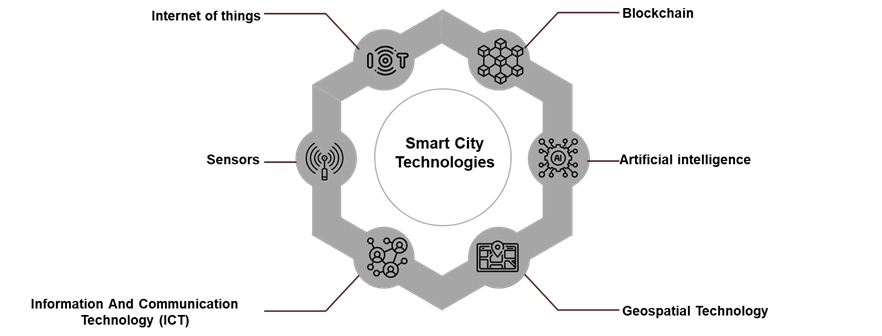
Use Cases
Some of the examples of the cities launched smartness in the city with digital technology for many different appliances.
- Saudi Arabia’s smart city, Neom, is creating a zero-carbon hyper-connected city called “The Line” that is powered entirely by clean energy.
- By mid-2017, hundreds of Smart Soofa’s smart benches of Changing Environments, Inc. had been installed in 65 cities in the US and Canada.
- Cities like Amsterdam, Atlanta, London, Melbourne, Philadelphia, and others have installed smart solar-powered compacting bins.
- “Smart City Towers” were introduced in Zurich in 2017, serving as smart streetlights, charging stations for electric vehicles, etc.
- Singapore uses real-time monitoring systems, such as IoT cameras, to monitor the cleanliness of public spaces, crowd density, and registered car traffic.
Conclusion
Smart cities have an increasing opportunity to become self-powering smart cities with zero emissions using digitalization and energy-efficient solutions. The 15-minute-city idea also falls under this category. Moreover, solar and wind energy power can directly support the city’s becoming more economically competitive, sustainable, and comfortable. For example, smart grids with real-time monitoring and predictive analytics can cut peak demands, better integrate renewables at lower costs, and relieve pressure on aging grid infrastructure while lowering carbon dioxide (CO2) emissions.
